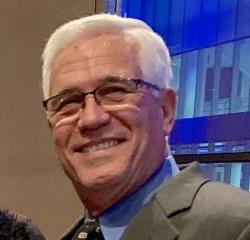Tips for Integrating Novice Players Into Your Youth Soccer Team
Great coaches can do great things with players of all experience levels. Sam Snow, US Youth Soccer Director of Coaching Education, is an expert at growing the game of soccer @ all levels from entry level to professional and offers valuable advice and ideas on integrating your players, successfully. We are thrilled to welcome Sam Snow as our newest columnist, helping our readers understand the game of soccer and inspiring our passions.
Youth soccer is always growing in America. Now more than ever. Because of the visibility of the 2014 FIFA World Cup your youth soccer club may have many new players sign up the upcoming season. Coaches of youth teams, especially recreational teams should be prepared for mainstreaming novice players with their more experienced children. Certainly we want these children new to the joys of soccer to come enjoy the game with us. However, if the experience is not FUN for them and they sit on the bench in favor of more experienced players, then they’ll dropout in a year or less.
How to handle this successfully?
Talk to the players and their parents at the beginning of the season to develop a sense of teamwork. Enlist the efforts of these team members to help you integrate new players. Everyone on the team should help teammates improve. Let them know that everyone is making a contribution. So here are a few ideas about merging the novice players with your returning team.
Spend a few minutes at the beginning and/or end of your training session with these new players on the basics.
Recognize the needs of your players and balance your needs with theirs. Devise training activities that follow the SLANTY LINE coaching method. In other words, there is room for individual success.
A simple example would be ball juggling. Instead of setting what the team record is (in other words the number of juggles by the best juggler on the team) and having everyone trying to break that record; have the players try to beat their own personal record. Now each player can try to set and beat their own records in any number of measurable techniques.
Develop perspective: Remember what you were like at their age and what you could do then; don’t judge the players by what you can do now.
Mix up your starting lineup. This will encourage the novice players to work hard and also encourage the returning players to help their teammates.
Create activities of inclusion not exclusion. An example is the old dribbling game of knockout. Everyone dribbles and you try to knock out the other players’ ball while maintaining control of yours. If your ball is knocked out then you sit out. This of course means that the worst dribbler on the team (the one who needs the most practice) gets knocked out early and the best dribbler on the team stays in. Now the kids who need the practice touching the ball are sitting on the ground watching the best two dribblers play. Make it a game of inclusion by having the players knocked out come to the coach and perform a simple dribbling move and then they go back into the game.
Make sure all of the parents understand what you are trying to do with the team.
Try to work with parents and make them part of the team rather than viewing them as critics to be avoided. When putting the players into groups for an activity, such as 4 vs. 4, have more experienced players join up with the novice players.
Now your expectation should be that the returning players should help the new players learn.
Use small group activities with a 1-returning player to 2-novice players ratio. Emphasize ball skill improvement as your overall team goal. Monitor what the returning players say to the novices. Emphasize positive feedback among teammates. Become a communicator!
Just a few ideas to get you started. For more assistance on this coaching situation please contact your club’s director of coaching or any of your state association’s State Staff Coaches.
Also check out the US Youth Soccer website for more ideas that you can use.






